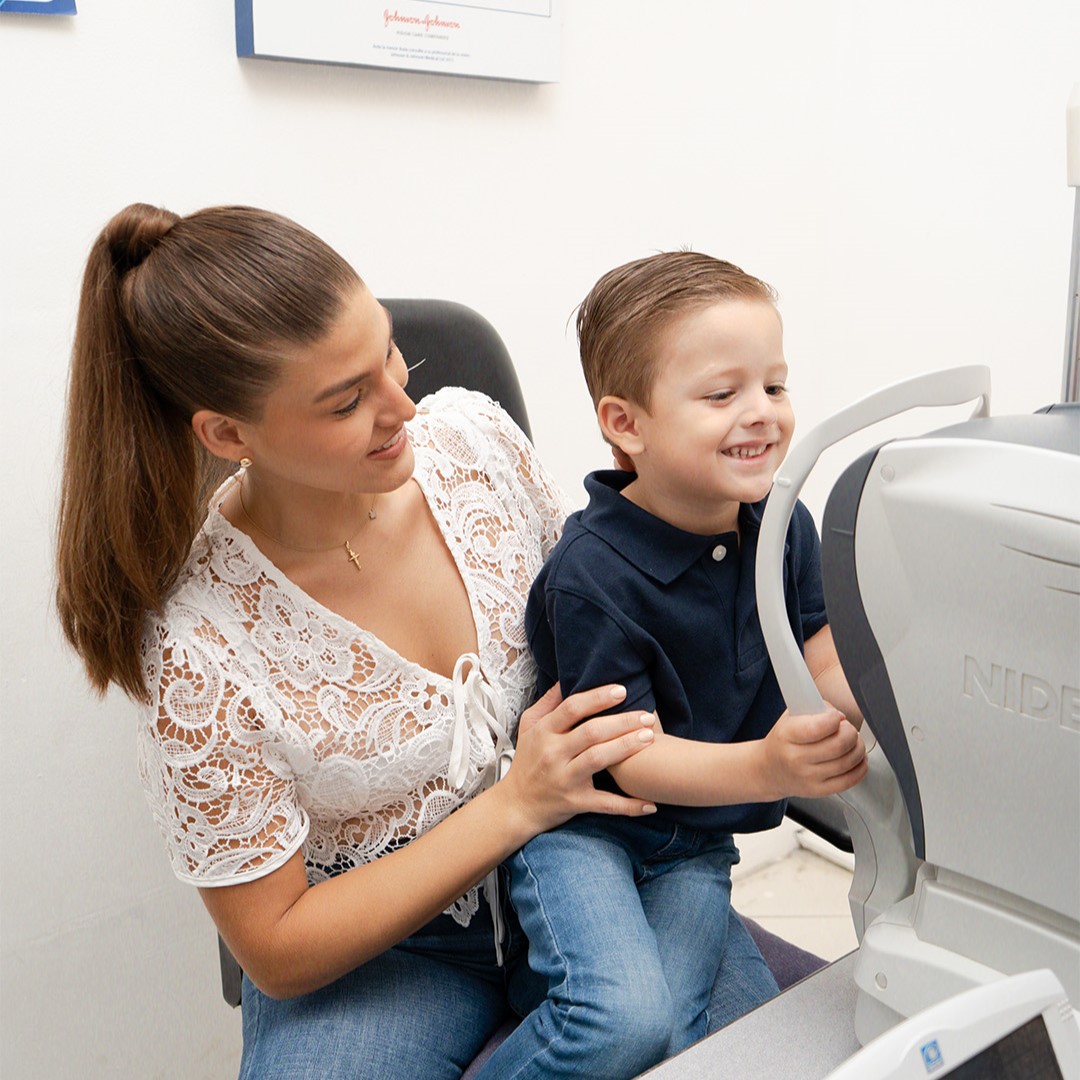EYE HEALTH
When to See an Optometrist
Consult with an eye care professional if your eye symptoms prevent you from enjoying your
activities or interfere with your ability to perform daily tasks. An optometrist can determine if you
have a refractive error such as myopia, hyperopia, astigmatism, and to what extent.
This professional will be able to advise you on options to correct your vision.
Children and Adolescents
Children may not realize that their vision is blurry, so they need an eye examination from a
pediatrician, optometrist, or other trained professional at the following ages and intervals:
- At well-child visits until school age
- During school years, every 1 or 2 years during well-child visits, when visiting the eye doctor,
or through school or public screenings
Refractive defects or ametropia refer to conditions where, due to improper optical functioning, the
eye is unable to provide a clear image, resulting in decreased visual acuity. Below is a brief
description of each condition.
NORMAL EYE: No refractive error.
In an emmetropic eye (without correction), the image from infinity (>6m) is focused on the retina,
meaning no correction is needed.
Myopia (Nearsightedness): Clear near vision but blurry distance vision; the image focuses before
the retina.
In myopia, the image from infinity (>6m) is focused in front of the retina. In this case, we can say
the eye has excess diopters, and we must correct it with a negative lens to focus the image on the
retina.
Hyperopia (Farsightedness): Clear distance vision but blurry near vision; the image focuses
behind the retina.
In hyperopia, the image from infinity (>6m) focuses behind the retina. In this case, we can say the
eye has a diopter deficiency, and we must correct it with a positive lens to focus the image on the
retina.
Astigmatism: Focusing problems caused by the cornea; a common, generally treatable
imperfection in the eye’s curvature, causing blurry vision at all distances.
Astigmatism occurs when the front surface of the eye (cornea) or the lens inside the eye has
uneven curves. Instead of a round ball shape, the surface is shaped like an egg, causing blurred
vision at all distances.
Astigmatism is often present at birth and can occur alongside myopia or hyperopia. It may not
always require corrective measures, but when necessary, treatment options include corrective
lenses or surgery.
Inability to focus on nearby objects, typically starting around age 40.
The most common symptom is blurred near vision, inability to read, and difficulty focusing. Other
symptoms may include double vision, haziness, glare or halos around bright lights, squinting,
headaches, or visual fatigue.
Is a refractive error that occurs when the eye’s lens cannot adjust to focus light
correctly, causing the focal point to fall behind the retina, making nearby objects appear blurry.
Corrective Lenses
Refractive errors can be corrected with glass or plastic lenses mounted on a frame (glasses) or
with small contact lenses that either float on or rest on the cornea. Both glasses and contact
lenses can adequately correct visual defects. For most people, the choice depends on aesthetics,
convenience, cost, risk, and comfort.
Myopia is corrected with single-vision negative spherical lenses.
Hyperopia is corrected with single-vision positive spherical lenses.
Astigmatism is corrected with single-vision spherical cylindrical lenses, both positive and
negative, prescribed specifically by the optometrist.
Bifocals are glasses that contain two lenses: an upper lens that corrects distance vision and a
lower lens that corrects near vision, for example, for reading. However, some people also need
correction for intermediate distances, such as when viewing a computer screen. Trifocal lenses are
glasses that meet this need by containing a third lens for intermediate vision.
Modern progressive lenses correct without a bifocal line, with a gradual progression of
lens power from the optical center downwards.


